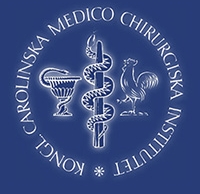The Department of Neuroscience is one of five departments moving in to Biomedicum, Karolinska Institutet’s new ultramodern laboratory building for experimental biomedical research and center for world class science opening in spring 2018.
In the beginning of the 1990’s, Karolinska Institutet (KI) had about 140 small departments, often with only one professor. This had become an inefficient organization and it was therefore decided to make a radical decrease of the number of departments to more than 30. Each of these new departments should have a greater independence from the central administration, and the freedom to take new initiatives. Neuroscience became a natural entity, and therefore the department of Neuroscience was formed July 1st 1993. Only part of the neuroscience groups at the KI could be included.
The following departments joined:
• Anatomy with the professors Gunnar Grant and Lars-Gösta Elfvin
• Histology and Neurobiology with Kjell Fuxe, Tomas Hökfelt and Lars Olson
• Neurophysiology with Sten Grillner and Per Roland
• In addition. Krister Kristensson came from the Pathology department in Huddinge
In addition to the professors, the department had seven university lecturers and 13 nontenured assistant professors (forskarassistenter), thus altogether a substantial scientific staff.
Initially we were in three different buildings, which complicated the interaction. In 1995, however, Neurophysiology could move into the Berzelius-building, and finally after eight years, in 2001 we could all move into the newly built Retzius laboratory, with facilities designed to fit the different members of the department.
Anatomy has the longest history of all preclinical departments at KI. Roland Martin was the first Professor of Anatomy, appointed in 1756 before the foundation of KI in 1810. The teaching was then at Riddarholmen, part of the old city. Anders Johan Hagströmer was the first Professor of Anatomy after the creation of KI and moved to the new site at Kungsholmen. He also became Inspector (President) after Jöns Jacob Berzelius and was followed by Anders Retzius, both as Professor and Inspector at KI. In 1947 KI moved to the present campus, Ture Petrén being Chair at the time. An important scientist in the department in the 1950s was Fritiof Sjöstrand, a pioneer in electron microscopy.
In 1877 Gustav Retzius, still well-known neuroanatomist, and son of Anders Retzius received a personal Professorship in Histology, the first chair in this subject, and the start of an independent Histology Department. He was succeeded by Emil Holmgren. Among the later professors in histology one may mention Lars Gyllensten, who retired from his academic position, to become a famous author, and member and permanent secretary of the Swedish Academy. In 1962 Nils-Åke Hillarp was appointed Professor in Histology and introduced the famous Falck-Hillarp technique for visualization of monoamines.
In the early 1940s the Finnish neurophysiologist Ragnar Granit was recruited to Karolinska Institutet, and in 1946 the Nobel Institute for Neurophysiology was created around him. He rapidly formed a research-intensive department and trained a large number of neuroscientists. Professors Curt von Euler and Bernhard Frankenhaeuser played later an important role. Ragnar Granit was awarded the Nobel Prize in 1967 for his work on the neural basis of colour vision. Sten Grillner joined the department in 1986.
The first Head for the Neuroscience Department was Sten Grillner (1993-2000) followed by Lars Olson (2000-2002), Staffan Cullheim (2003-2010), Sandra Ceccatelli (2011-2017) and Gilberto Fisone (current).
